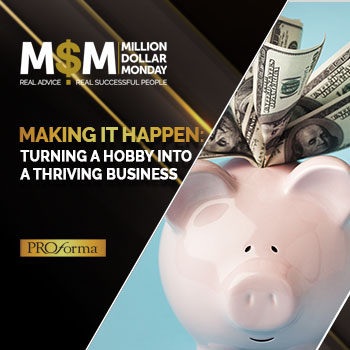There are clients that are terrible for terrible’s sake, and there are clients who are terrible because they’re trying to protect a multi-billion dollar brand image that’s more recognizable to the world than pizza, the Olympics and the moon combined. With clients that are just bad, there isn’t much you can do besides wonder what marketing sins you’ve committed to make your business such a jerk-magnet. With companies that are a pain because they’re trying to protect a million-dollar trademark though? There’s plenty you can do to soothe the jerk out of even the fussiest, whiniest, most miserable clients.
With big brands it all comes down to paying the proper amount of care to their artwork. Promo Marketing spoke with several suppliers skilled in taking care of the biggest of the big brands: Name-brand beverage companies (because when it comes to famous, it’s hard to go above Coors or Coca-Cola). Whether you’re looking to work in the concession big leagues, or just with major brands in general, there is plenty of advice here to make your work go as smoothly as possible.
1. Printing Details
Big brands can be fanatical about how their logos are printed, obsessing over even the most microscopic presentation details. Rightly so, since for a major brand even a slight difference in a logo can invalidate years of expensive marketing research, as well as risk legal harm to their trademarked designs. For this reason, careful proofing and communication about art expectations with your name-brand client is a necessity.
Offering electronic proofs of artwork is one way to ease a nervous client about a logo’s appearance. Paula Piano, director of sales and marketing for Las Vegas-based drinkware supplier Visstun, stated that the company has found that offering free pre-press e-proofs helps big-brand legal departments approve art in a timely manner.
Physical pre-production samples are another option. Steve Ess, sales representative at drink and barware supplier Co-Rect Products, Golden Valley, Minn., strongly stressed a physical sample’s value when working with large name brands. “We always do a pre-production sample, even if they say ‘Go ahead and run it, we won’t have a problem with it, we’re sure it will be fine,'” he said. “Our feeling is if you really want to do it right, do a sample so that they can look at it and make sure it’s exactly what they want,” explained Ess. “The last thing you want is to do a big order off just an e-proof, then when they receive the order get the call of ‘Hey it’s not what I thought it was’ or something like that, which does happen.”
2. Safety
Product safety is a concern for every buyer, but be aware that some big brands will have a deeper and more devoted interest in the subject than a typical company would if they are at least partially involved in marketing toward children. Michael Bistocchi, senior vice president of sales and marketing for the supplier CleggPromo Inc., Gardena, Calif., provided an example from the beverage industry.
“BWL [Beer, wine and liquor] companies are not as concerned with safety issues compared to a beverage company that reaches all age groups,” he said. “For instance, Coca-Cola will generally require CPSIA compliance on just about everything that falls into that promotional category, whereas Budweiser usually does not,” he said. The adults-only nature of alcohol brands, versus an all-ages company like Coke, allows BWL to avoid many of the stricter CPSIA rules that are applied to products that may reach children.
3. Explaining How Things Work
Just because you’re working with a billion-dollar business, don’t assume that it will have a great understanding of the promotional marketing process. Like any other client, it’s to your benefit to make sure they understand all necessary details and processes, from delivery times and color-matching to imprint areas and other decoration restrictions. Ess explained that introducing them to an idea as simple as PMS-matching can have a great impact on simplifying an order.
“That takes a lot of the guesswork out of the game,” he said. “Some newer brands will just say, ‘I want this in fire engine red,’ but if you can really get them to the PMS colors and nail it down, that’s a lot better,” he said. Ess noted as well that explaining printing and other decoration variations across products can also be helpful. Exact color matching across products in a bundle is something often desired by large brands, but may be difficult depending on the materials of the products and how they can be decorated (a cork coaster decorates differently than a metal tumbler due to the nature of the materials, printing on a black background is different than a white, even glass and plastic handle colors differently). Make sure your clients understands what, if any, differences in size, color or texture they can expect in decoration across products in order to avoid confusion.



